Finding the Right Running Shoes
Find the right shoes in just a few steps

Are you a running beginner or have you already run 1000 miles in your shoes? Then it's time for a new pair of running shoes. But how do you find running shoes that suit you and your running training? In the following article, we'll explain what you need to consider when choosing the right running shoes, how to find the right size and how your body shape and phyisical condition influences your decision.
Finding the right running shoe: From comfort to timed races
Running is one of the easiest and cheapest sports of all. Finding the right running shoe, on the other hand, is no easy task. We've written this guide so you can find the right shoe amidst a large range of cushioning, neutral, light, trail and spike shoes and enjoy running for years to come. You might ask yourself, why go with a stable or motion control shoe over a cushion or neutral shoe? You can find this and other tips on buying shoes in this article.
- Find the right running shoe in 3 steps
- Buying tips for motivated runners and those who want to become one
- Background knowledge: How to become a running shoe expert
- Other important running gear
Find the right running shoe in 3 steps
While experienced runners usually know which running shoe they prefer, running beginners need to get the basics before they know what they are looking for.
Step 1: Give a run analysis a try
Treadmill, motion analysis software, foot scanner
Your first priority with running shoes is minimising your risk to injury, so be sure to invest in a run analysis. This is now offered by most reputable sports stores. Shoe consultants use a variety of systems: An analysis makes use of treadmills and cameras while special motion analysis software scans the foot to measure foot pressure points which say a lot about your running style. However, these systems are fine for most runners.

Medical motion analysis: for injury-prone runners
For those with joint pain, previous sport injuries or those who wear orthopedic insoles should play it safe and undergo a medical motion analysis. Contact a medical specialists to find out where it's offered. You can find more information from sports physician, marathon runner and triathlete Dr. Matthias Marquardt on his website.
When looking for the right runner shoe: ask an expert
No matter which run analysis you undergo - a competent expert will also consider your running experience, your weight and any health problems you may have. Running style analyses aim to pinpoint where your foot tends to overpronate or supinate or neither. An analysis can also see if you run with your heel, which is common among beginners, or whether you are a midfoot runner. With this information, the running specialist will be better able to recommend the right shoe.
Finding the right shoe for all types of feet
Runners with a supination or overpronation may benefit from stability control shoes, while those with a healthy running style should be fine with normal running shoes. You can find more information on this subject in the section "Background knowledge: How to become a running shoe expert.
Your shoe consultant should pay special attention to the correct heel spacing, i.e. the difference in height between the front and back of your foot. Depending on the shoe, the heel height can be more than a third of an inch and also depends on whether you've had previous issues with your Achilles tendon. Orthopedic doctor and passionate runner Dr. Matthias Marquardt has a tool on his website that helps calculate the difference in height between the heel and ball of the foot.

Step 2: Choose the distance
In his book "Die Laufbibel" (The Running Bible), renowned sports physician Dr. Matthias Marquardt recommends keeping your mileage and pace in mind when shopping for shoes.
The right running shoes for longer sessions
- For longer endurance runs, inexperienced runners with a little extra chub may benefit from cushioned shoes. These shoes tend to protect joints better than normal running shoes.
- For those with a high or flat arch, stability shoes might be your best bet. For pronated feet, pronation support shoes help counteract a pronounced foot pronation. These shoes help reduce the risk of a twisted ankle.
- Weathered runners might consider trying on running shoes marketed as extremely light. Although these shoes tend to offer less comfort, they are extremely light. And we all know from our Physics class that the lighter you are, the faster you are.
The right running shoe for short, all-out runs
Step 3: Pavement king or forest tree hugger?
Most runners prefer paved paths, but what if you want to run through the mountainside or forest?
In fact, running on uneven terrain like forests or hillsides help with coordination, balance and muscle strength. Ordinary running shoes and slippery surface conditions don't mix. You can slip and fall with the wrong shoes and the risk to injury increases.
Trail shoes: when bad weather is no longer an excuse
Trail shoes are more slip proof than normal shoes and help you better navigate unpaved terrain. A waterproof barrier means your feet stay dry, even in wet and muddy conditions. The bottom of the shoes have pronouced grooves, which help improve grip. But what should you look for specifically when buying trail shoes?
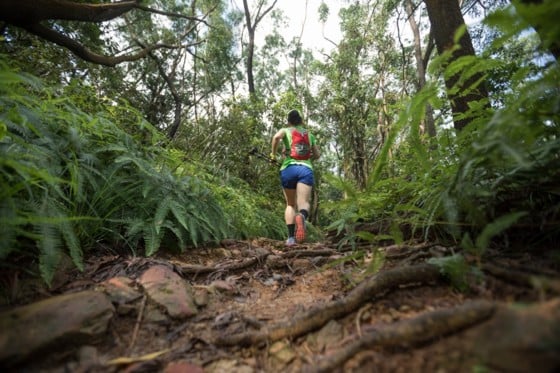
Paved paths: for demanding training sessions
Flat shoes or track spikes that grip the ground better are your best bet. We don't recommend spikes for unexperienced runners. Some models have longer spikes and can also be used for cross-country running.
Running shoe buying tips: Finding the right size
Now you're ready to go shoe shopping! To find the right size, here are a few simple tips
- Buy your running shoes one size larger than your normal shoes.
- Be sure there is a thumb's width of space between your big toe and the end of the shoe.
- It's best to buy your running shoes in the evening, as your foot expands throughout the day.
In this video...
If you have previous running experience, take your used running shoes to the sports store. The specialist can tell you if you tend toward overpronation or supination based on the wear and tear of the sole. You can also find more information about this below in the section „What is the spectrum of foot rotation?“.
What it takes to become a running shoe expert
Why undergo a running style analysis?
A run analysis can help you tweak your running technique and find the right shoe. With this knowledge at your disposal, you can expand your training and train more effectively. If you'd like help improving your running technique, take a look at our article on how to improve your running technique.
What are the types of abnormal pronation?
If you are starting in this hobby or are switch from another and haven't had an issue with your foot before, it's enough to know in which direction your ankle can potentially roll when running. There are two types of abnormal pronations: overpronation and supination.
Overpronation
- Causes: An overpronation occurs when the ankle rolls inwards, towards the runner.
- Occurrence: This is often seen in untrained runners in the early stages. Likewise, pigeon-toed athletes may also suffer from this.
- How to spot it: This rolling behavior can also be seen with running shoes after a few miles: The insides of the soles are usually more worn than the outsides.
- Therapy: To help prevent knee problems, shin splints or an inflamed achilles tendon from developing from an overpronation, shoes with added stability support may help. Also, be sure to train and stretch this area to see improvements.
Supination
- Causes: Supination refers to a shifting of the weight to the outer edge of the foot.
- Occurrence: This is the cause of duck feet.
- Identifying feature: Duck feet are easily identifiable. Worn out shoes can also show an apparent supination.
- Therapy: Unlike overpronation, shoes with pronation supports are not recommended. Instead, try various exercises that reduce pronation and help improve coordination while strengthening the foot muscles. Orthopedic shoe inserts can also help. Without treatment, you risk inflamming of the Achilles tendon or getting shin splints.
No Misalignments
If you have neither overpronation nor supination, visit a sports store and buy sole inserts or neutral shoes that are designed for runners with neutral feet. If you'd like to dive even deeper into the subject, you should flip through the "running bible" by Dr. Matthias Marquardt.
Better running through targeted training
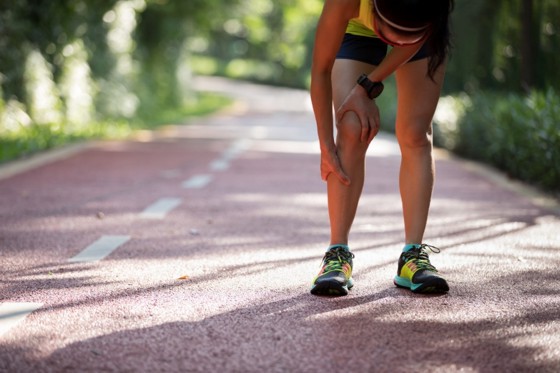
This applies for all runners: Practicing your coordination and the running ABCs helps develope your running technique and also helps you stay in shape: Running stays fun and it challenges your body to succeed. If you want to know what beginners should pay attention to and which exercises belong to the running ABC, see our article running for beginners. We've also compiled helpful tips for you in detail in the video "Improving running technique" with the experienced triathlete Sebastian Neef. The video is in German, but we will soon release a version in English.
Not only can you train your running style in a running group, but also in a professionally run running camp.
Which running gear can't you do without?
If you seek advice and consultation when buying a shoe, you already have a leg up above the rest. Be sure to also put thought into other parts of your wardrobe if you want to do it right. If you're wondering which pants, socks, jacket, etc work best with certain weather, take a look at our article the right running gear.
In our store you can find hundreds of different designs for jerseys, pants and jackets - just for runners like yourself. Put together your own running wardrobe with our 3D Designer»
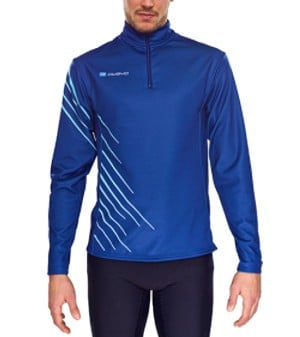
Men's Winter Running RLW5w Pro Jersey
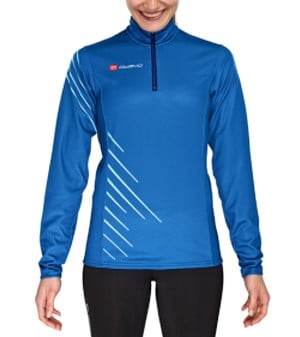
Women's Winter Running RLW5w Pro Jersey
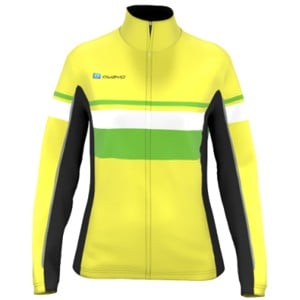
Women's Softshell Team Jacket RJS5w Pro
Image Credits: Title Image: lzf/gettyimages.de, Image 2: Tawan Chaisom / EyeEm/gettyimages.de, Image 3: lzf/gettyimages.de, Image 4: lzf/gettyimages.de, Image 5: lzf/gettyimages.de.